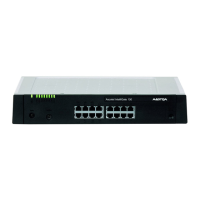System Functions and Features as of I7.9
Identification Elements 53
syd-0200/3.0 – I7.9 – 11.2009
3. 5. 2. 1 Incoming call with local call forwarding
The caller's configuration possibilities for the redirecting information depend on
the call's origin:
If the caller is
• a user in the local PINX, the redirecting information is always transmitted to the
user who is calling.
• a PISN user, a PISN user in a virtual network or a user in the public network, you
can select in the trunk group configuration whether the redirecting information
should be sent to the calling user or suppressed (Send redirecting information =
Yes / No).
• a public network user or if the user who redirected the call has activated COLR,
the caller will not see that he is being redirected. If this setting is required only
for internal redirected calls but not external ones, the COLR for redirected calls pa-
rameter in the trunk group configuration can be set to No.
In a call forwarding chain with several users the name/number of the last user in
the chain is displayed as redirecting information to the calling user.
3. 5. 2. 2 Incoming call with CDE overflow
If in the event of a CDE overflow the call is routed from one call distribution ele-
ment to another due to the entries under CDE if busy or CDE if no answer, the redi-
recting information provided to the calling user depends on the new destination:
If the destination is
• an internal user or a user in a private QSIG network, the name/number of the
CDE is transmitted.
• a virtual network PISN user or an external user in the public network, no redi-
recting information is transmitted.
3. 5. 2. 3 Outgoing call with non-local redirection
The redirecting information is also available to the calling user in the case of an out-
going call that is not redirected via his own PBX but via a PISN user, an integrated
GSM user, a virtual network PISN user or a public network user.

